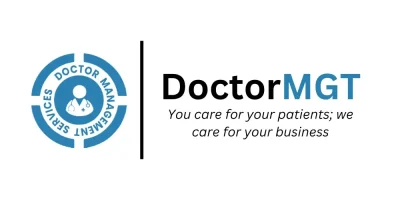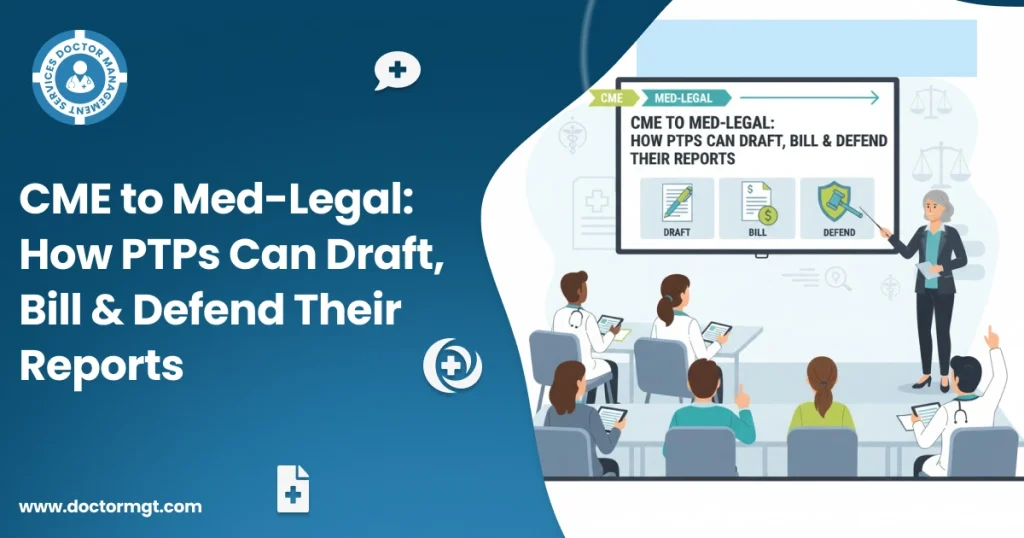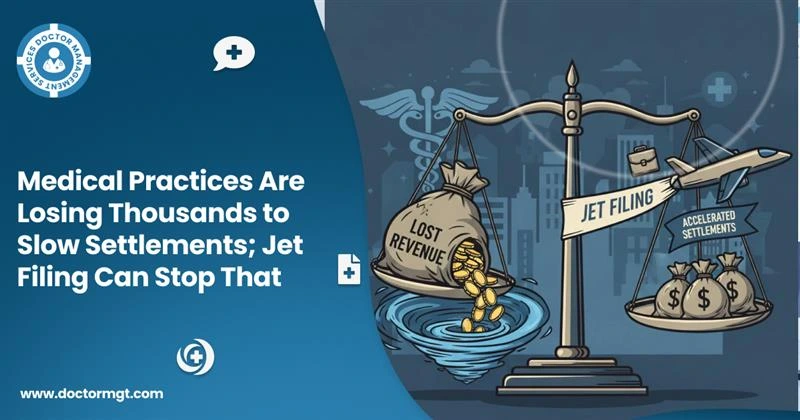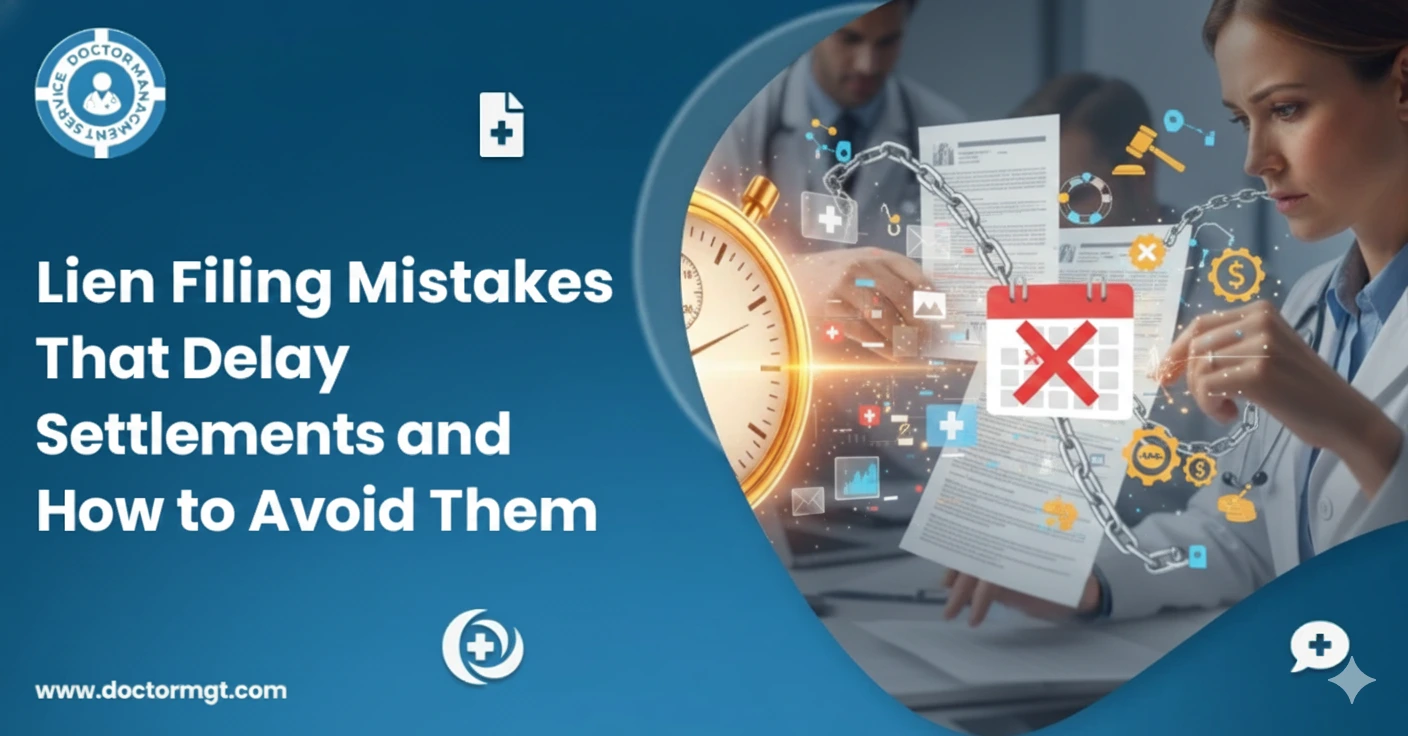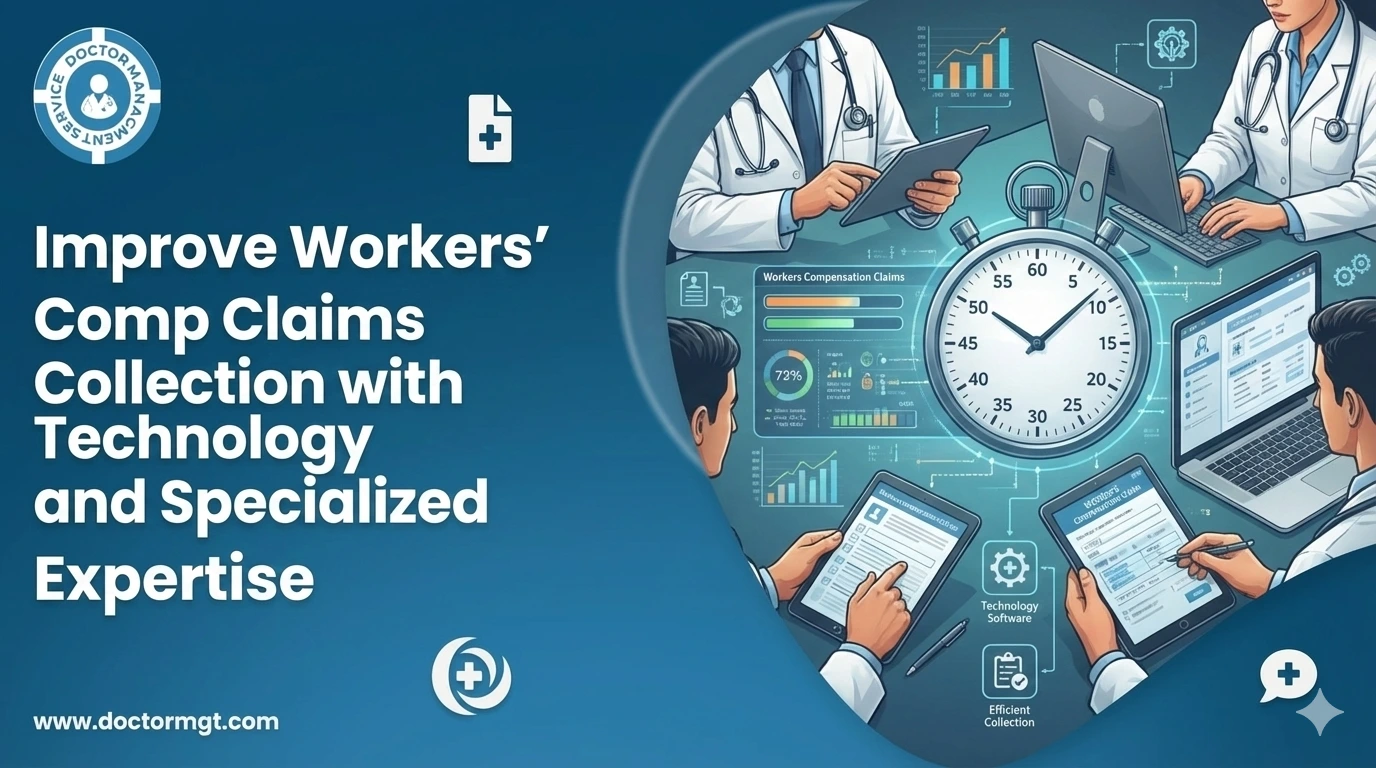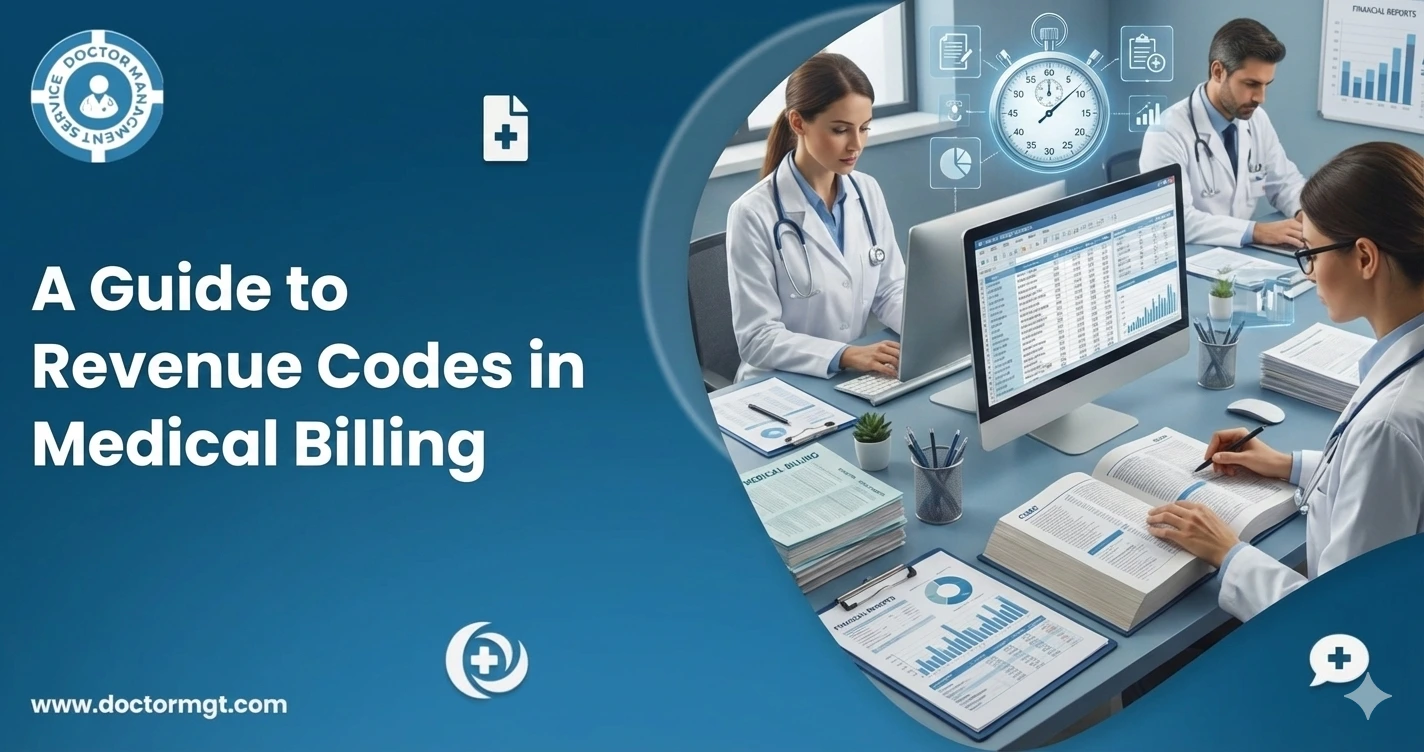Many California providers believe Med-Legal reporting is only for QMEs and AMEs, but that’s a common misconception. Under California Labor Code § 4628 and California’s workers’ compensation rules, a Primary Treating Physician (PTP) can also draft a Med-Legal-valid report and be reimbursed for it when strict legal and clinical requirements are met. It’s not permitted in every case, and there are specific restrictions, but when done correctly, PTPs can confidently bill and defend their reports.
In this blog, we will talk about how exactly PTPs in California can handle the Med-Legal process, from drafting to billing and defense.
1. Legal & Regulatory Framework Every PTP Must Know
Before drafting a report, it’s essential to understand the rules that govern Med-Legal work in California. A well-grounded report isn’t just about good documentation; it’s about compliance.
| Key references that must be included:
|
|
| California Labor Code § 4628 | Limits who may prepare the Med-Legal report; physicians must personally perform non-clerical work |
| California Labor Code § 4062.3 | Governs record exchange, declarations, and service rules. |
| California Code of Regulations § 9795 | Outlines the Medical-Legal Fee Schedule and modifiers |
| California Code of Regulations § 9785 | Specifies treating physician reporting requirements and use of PR-2/PR-3 forms |
| Title 8 § 35(i) | Procedures when records are delayed. |
Pro Tip:
- Include a perjury declaration with date and county, as required under § 4628.
- Attach a 4062.3 declaration specifying page counts and service compliance.
- PTPs must use PR-2 or PR-3 forms where required under CCR § 9785.
Using QME / Med-Legal templates and DWC Quality Assurance Checklists (such as those from California Orthopedic Association and California Department of Industrial Relations) can help standardize your reports and make them far more defensible.
2. When a PTP May Bill a CME as Med-Legal
Not every CME qualifies for Med-Legal billing. The situation must align with clear legal and clinical triggers.
Typical qualifying scenarios include:
- P&S / MMI Evaluations: When the condition is stabilized and the report helps resolve long-term medical questions.
- Active Disputes: The report directly addresses causation, treatment necessity, or permanent impairment.
- Formal Requests: The evaluation must be requested by a party (injured worker, attorney, claims admin, or WCAB).
- Supplemental or Follow-Up Reports: When new records arrive or clarification is needed after another evaluation.
- No QME / AME Involvement: In rare cases, PTPs may fill the gap, but should expect closer scrutiny from payers.
Note: Even if the clinical trigger exists, payers often review PTP Med-Legal charges more strictly when a QME or AME would normally handle the dispute. Always document who requested the evaluation and why.
3. Structuring a Med-Legal Report That Holds Up Under Review
A well-structured report doesn’t just look professional; it anticipates scrutiny. Below is a practical structure that helps ensure compliance and clarity:
Header & Introductory Section
- Use your letterhead, date, and list all recipients (worker, attorney, claims admin, WCAB).
- Clearly state the subject and evaluator status (PTP, QME, etc.).
Identifying Information
- Worker’s name, DOB, claim number, injury date, employer, job title.
- List who sent records or requests.
Advocacy / Request Letters
- Acknowledge letters or issues raised and include dates.
Evaluation Details
- Where the exam occurred, interpreter use, any breaks, or delays.
Medical & Employment History
- Relevant employment history (typically 5–10 years or longer if clinically significant), job demands, past medical history, and any preexisting conditions.
History of Present Injury
- Worker’s own account, compared against records or statements.
Current Treatment & Providers
- Therapies, medications, surgeries, and treating clinicians.
Social & Lifestyle Factors
- Smoking, alcohol, hobbies, sleep, and psychological factors.
Records List & Declarations
- Table of records: source, date, page count.
- Include § 4062.3 declaration.
- Note if any records are missing or late.
Objective Findings & Testing
- Vital signs, physical and neurological exams, orthopedic testing, imaging.
- Document results, norms, and deviations.
Diagnosis & Impressions
- Primary injury-related diagnoses and incidental findings.
Causation & Apportionment
- Clearly explain industrial vs nonindustrial contributions with percentages.
- Reference standards or literature.
Functional Restrictions & Impairment
- Apply AMA guidelines or other relevant standards.
Future Medical Care Plan
- Outline therapies, procedures, or surveillance needed.
Return-to-Work Opinion
- Full duty, modified duty, or alternative work, with rationale.
Discussion & Rationale
- Walk the reader through your reasoning. Address conflicts in records.
Conclusion
- Bullet your findings: causation, apportionment, impairment, future care, work status.
Signature & Certification
- Include perjury declaration and required signatures.
Attachments / Exhibits
- Record list, imaging, labs, graphs, worksheets.
Pro tip: Use bullet points to make reports easier to navigate, cross-reference exhibits for clarity, and document all delays, interpreter use, and time spent face-to-face.
4. Billing Strategy, Page Rules & Modifiers
Billing is where many PTPs lose legitimate reimbursement. Know your codes, page rules, and declarations inside out.
Base Fees & Page Inclusions
- ML201 / ML202: Up to 200 pages of review included.
- ML203: Up to 50 pages included.
- Excess pages: Bill under MLPRR at $3 per page.
Declarations & Page Count
- Always include a § 4062.3 declaration stating page count and compliance.
- If the declaration is missing, note it in the report and decline to review those records until proper documentation is received.
- Reimbursement = (Relative Value × Conversion Factor) + excess page charges.
Modifiers
- -92: PTP performing the Med-Legal evaluation.
- -93: Interpreter or impaired communication (document added time).
- -94: AME involvement.
- -96 / -97 / -98: Specialty augmentations such as Psychiatric, toxicology, oncology augmentations.
Modifiers do not apply to per-page MLPRR charges, and each modifier must be explicitly supported in the report.
Testimony, Depositions & Supplemental Reports
- ML204: Time-based billing for testimony, preparation, and travel.
- ML205: Time-based review (e.g., surveillance video).
- Supplemental reports must address new issues or records only.
Avoiding Duplicate or Invalid Charges
- Don’t bill for undeclared records.
- Don’t issue a supplemental report for previously covered issues.
- Don’t bill the same work twice.
5. Common Pushbacks & How to Defend Your Report
Claims adjusters and auditors will challenge your report. Anticipating their objections keeps your billing secure.
| Challenge | Recommended Response / Prevention |
| This is a treatment report, not Med-Legal | State clearly in your introduction that the evaluation is for dispute resolution |
| Records lacked § 4062.3 declaration | Document in your report that you only reviewed valid records or requested proper service |
| Apportionment is speculative | Provide clear, evidence-based reasoning and cite standards |
| Modifier use is unjustified | Include specific language on interpreter use, complexity, or specialty |
| New records make the report obsolete | Issue a supplemental report only for the new information |
| Testimony time is inflated | Keep detailed logs of prep, travel, and questioning time |
6. Workflow & Best Practices
A strong Med-Legal workflow is the best defense against denials and ensures consistency.
- Use pre-report checklists (DWC / COA).
- Keep a report index with page counts and declarations.
- Maintain structured templates with standard headings.
- Document interpreter use, delays, and clarifications meticulously.
- Build a boilerplate language bank for common scenarios.
- Train staff to manage records, declarations, and exhibits.
- Do a final quality review before submission.
Final Thoughts
This is a PTP Med-Legal playbook, rather than just a procedural checklist.
PTPs can confidently generate Med-Legal reports that withstand scrutiny and receive the proper compensation by fusing a strong legal foundation, meticulous organization, astute billing techniques, and proactive defense.
Be the doctor whose reports are trusted by attorneys, claims managers, and other healthcare professionals, and whose reports become the benchmark for others to follow. In addition to improving patient outcomes, that degree of accuracy and dependability contributes to the development of a more robust and long-lasting practice.
For this, Primary treating physicians can work with an experienced QME/ AME billing company. Which can handle that all for you, so you don’t have to.
